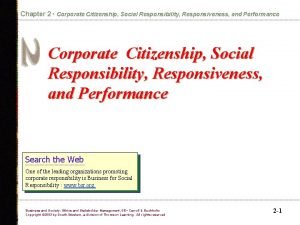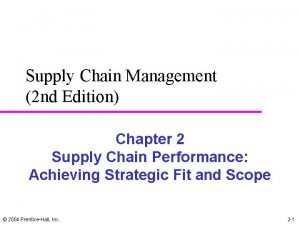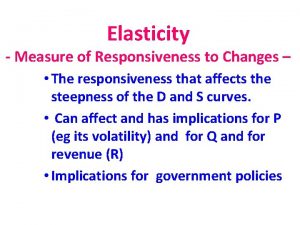Interface Guidelines Principles Responsiveness Interface Guidelines Principles 7










- Slides: 10

Interface Guidelines & Principles Responsiveness

Interface Guidelines & Principles § 7 principles for Interface Design 1. 2. 3. 4. 5. 6. Focus on the users & tasks, not technology. Conform to the User’s View of the Task. Consider function first, presentation later. Promote Learning Deliver Information Responsiveness

Responsiveness § The software’s ability to keep up with users and not make them wait.

Responsiveness § 2 types of speed – Real or Machine versus Perceived Speed § Real/Machine Speed – The speed at which the computer operates. § Perceived Speed – The speed at which the user perceives the computer operates. – This is the most important speed.

Perceived Speed § Assume you are displaying a 3 D image. – Real Speed § You show an hour glass. § When the image completely renders, display the image. – Perceived Speed § You show the image as it is rendering. § Perceived Speed is more pleasing to the user.

Responsiveness § Improving the responsiveness (speed) of software. – Increases user satisfaction. – Increases productivity.

Responsive Software Should 1. Provide enough feedback for users to see what they are doing. 2. Let users know when it is busy. 3. Give the user a gauge on how much time operations will require. 4. Allows the users to work at their own pace. 1. Increases productivity.

Responsiveness § Responsiveness is NOT the same as performance. – Slow software can have a good response time. § Computation is always faster than communication. – The computer’s speed (in most cases) is faster than the user’s ability to communicate. § All delays are not created equal. – Different delays require different responses.

Reasons for Poor Responsiveness 1. Designers rarely consider responsiveness during design. 2. Programmers equate responsiveness to performance. 3. Developers use simple naïve, implementations. 4. UI tools are inadequate to support responsiveness. 1. SQL Query Processing. 5. Managers hire people with the wrong skills.

What are some responsiveness bloopers? Give me 5 examples of responsiveness bloopers.
 Social responsiveness scale
Social responsiveness scale Strategic fit means
Strategic fit means Communication style driver
Communication style driver Social responsiveness
Social responsiveness Porter’s diamond of national advantage
Porter’s diamond of national advantage Intrafunctional scope
Intrafunctional scope Ir grid
Ir grid Cost responsiveness efficient frontier
Cost responsiveness efficient frontier Replenishment cycle in supply chain
Replenishment cycle in supply chain Cost pressures and pressures for local responsiveness
Cost pressures and pressures for local responsiveness What are the basic themes of humanistic therapy?
What are the basic themes of humanistic therapy?



















